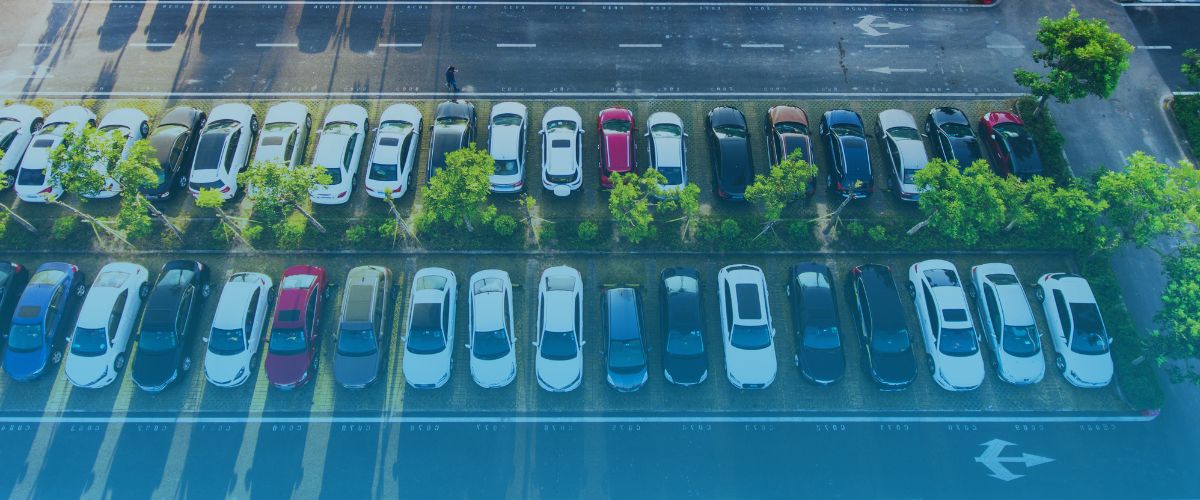Why the best-run car parks don’t generate complaints

You don’t need to know the intricacies of the law – but your car park management company does
09/05/2025
One Car Park, Multiple Problems
12/06/2025Some car parks get all the attention. Usually for the wrong reasons.
A tenant’s annoyed. A visitor didn’t understand the signs. Someone’s posted online about a fine they think was unfair. And suddenly, what should have been a simple part of the site becomes the source of stress, noise, and conflict.
But not every car park runs this way.
Some just work. Quietly. Cleanly. Consistently.
No drama. No angry emails. No need for management to step in or smooth things over.
And if you’re not hearing about them, that’s exactly why they’re working.
Order without friction
At Park & Control, we’ve learned that a well-managed car park isn’t one where problems get dealt with quickly. It’s one where problems don’t tend to arise.
That might sound like semantics - but it isn’t. It’s the difference between containment and prevention. Between being reactive and being quietly in control.
Because when a car park starts to generate complaints, the real issue usually isn’t enforcement. It’s design.
So the question becomes: what actually makes a car park work?
And how do you build a system that keeps everyone informed, compliant, and - crucially - calm?

Let’s start with clarity
Most complaints don’t come from bad intentions. They come from confusion.
The driver didn’t realise they had to pay. They weren’t sure if their space was part of the scheme. They overstayed by mistake because the time limit wasn’t obvious. Or the signs contradicted each other, and they guessed wrong.
None of this is inevitable. It’s almost always a failure of clarity.
That’s why signage matters - not just legally, but practically. It has to make sense in motion. At eye level. At decision points. And it has to stay consistent from entry to exit, so the story doesn’t change halfway through.
When the rules are simple and clearly presented, most people follow them. Because they’re not trying to break the rules - they’re just trying to park.
Which means your first job, always, is to make compliance the easiest option.
Then remove the friction
The next reason complaints build up? Systems that make life harder than it needs to be.
If you need to fumble for coins, queue at a machine, or decipher a parking zone map just to stay on the right side of the rules - something’s wrong.
Good systems don’t make you work to do the right thing. They streamline it.
That’s why we use digital tools like APCOA Connect, giving drivers the option to pay or register directly from their phones - no paper, no guessing, no delay. It’s also why our exemption platforms allow trusted visitors or tenants to be pre-approved, with no form-filling or code-sharing needed on the day.
The smoother it is to comply, the less resentment you build. And the less reason people have to challenge the outcome later.
Our Simplified Systems
Enforcement should be fair - and feel fair
Every enforcement system needs boundaries. But boundaries only work when they’re respected - and they’re only respected when they’re trusted.
That’s where many providers fall short.
A parking charge might be valid. But if the driver feels blindsided, misled, or ignored when they appeal, the enforcement itself becomes the problem. Even if it’s technically correct.
We’ve taken a different approach.
At Park & Control, we believe in enforcement that holds the line - but also listens. Our appeals system is designed to be clear, human, and fast. If something was genuinely misunderstood, we’ll take that seriously. And if we’ve made an error, we’ll put it right.
Because the goal isn’t to penalise. It’s to uphold a system that works.
And in the long run, fairness always enforces itself.
But don’t overlook the physical details
You can have the clearest signs and smartest tech in the world - and still run into problems if your site looks neglected.
Drivers take their cues from the environment. If lines are faded, signage is dirty, or machines are broken, people start to second-guess the rules. And when that happens, compliance drops.
So part of good car park management is simple: keep it tidy.
That means repainting when the markings wear down. Replacing a cracked sign instead of waiting for a complaint. Making sure lights are working after dark. Responding quickly when a machine goes offline.
It’s basic. But it matters. Because when a site looks cared for, it’s far more likely to be respected.
And that has nothing to do with enforcement - and everything to do with trust.
A good system is felt - not seen
The best car parks don’t call attention to themselves. They don’t need someone patrolling every hour. They don’t spark a chain of emails every week. And they don’t create unnecessary tension between landlords, tenants, visitors, and staff.
They work because they’ve been set up to work - not to catch people out, but to guide them in.
That means:
- The rules are obvious.
- The tools are usable.
- The enforcement is measured.
- The upkeep is continuous.
When all of that’s in place, something interesting happens.
People stop complaining - not because they’ve been silenced, but because they don’t need to.

One final thought
There’s a trap in car park management - the idea that success is measured by enforcement metrics, or by how quickly issues get dealt with.
But often, the most successful sites aren’t the ones we talk about at all.
They’re the ones where drivers park, pay, and leave - without wondering if they’ve done something wrong. Where tenants never think about the rules because they just make sense. Where complaints don’t come in because nothing has gone wrong.
That kind of silence isn’t luck.
It’s the result of a system designed to stay in the background - quietly enabling the site to function, day after day.
And that’s what we aim for at Park & Control: car park systems that feel almost invisible - because they’re doing exactly what they should.
If your site doesn’t feel like that right now, we’d be happy to help.




